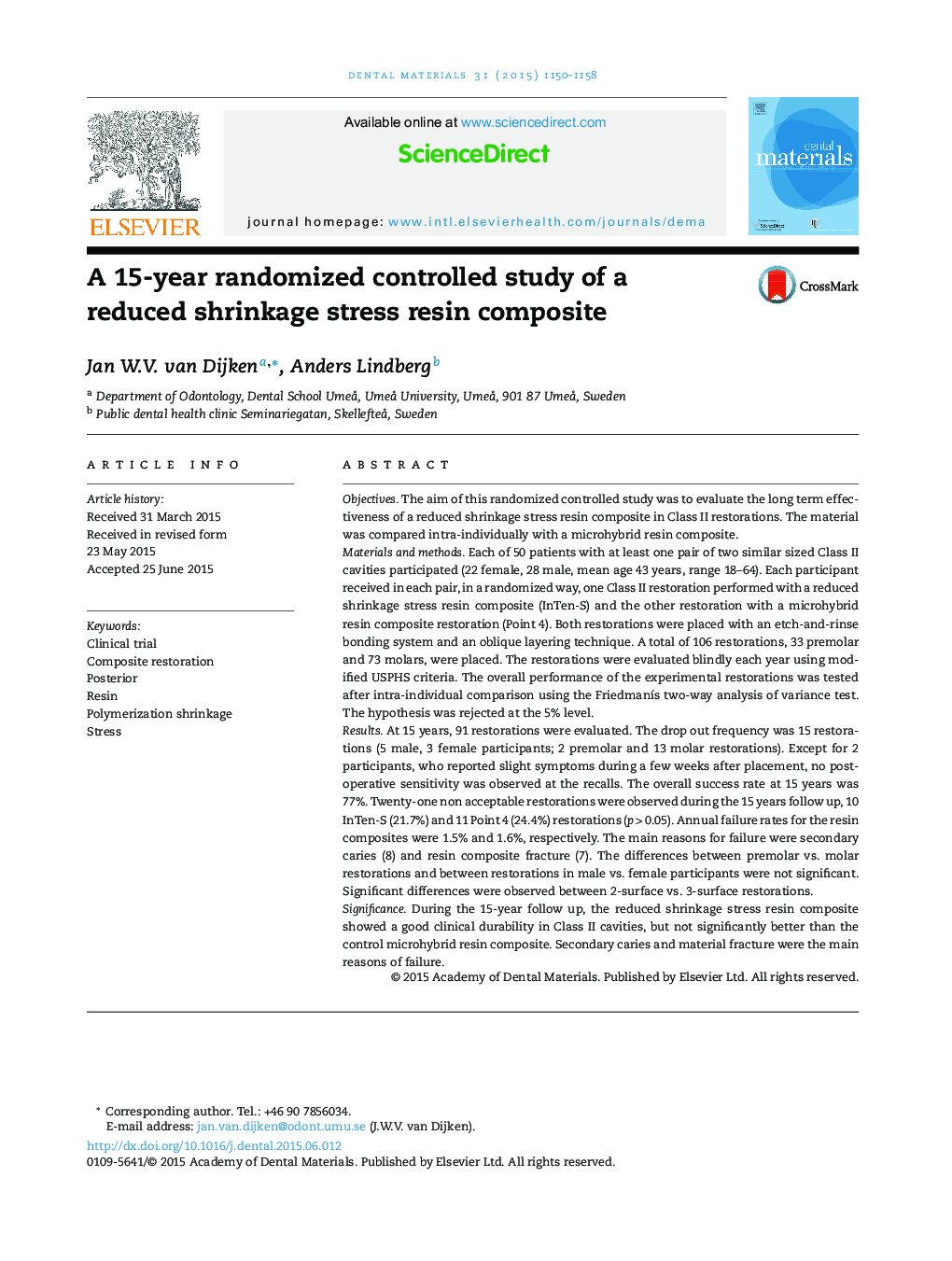| کد مقاله | کد نشریه | سال انتشار | مقاله انگلیسی | نسخه تمام متن |
|---|---|---|---|---|
| 1420600 | 986374 | 2015 | 9 صفحه PDF | دانلود رایگان |
ObjectivesThe aim of this randomized controlled study was to evaluate the long term effectiveness of a reduced shrinkage stress resin composite in Class II restorations. The material was compared intra-individually with a microhybrid resin composite.Materials and methodsEach of 50 patients with at least one pair of two similar sized Class II cavities participated (22 female, 28 male, mean age 43 years, range 18–64). Each participant received in each pair, in a randomized way, one Class II restoration performed with a reduced shrinkage stress resin composite (InTen-S) and the other restoration with a microhybrid resin composite restoration (Point 4). Both restorations were placed with an etch-and-rinse bonding system and an oblique layering technique. A total of 106 restorations, 33 premolar and 73 molars, were placed. The restorations were evaluated blindly each year using modified USPHS criteria. The overall performance of the experimental restorations was tested after intra-individual comparison using the Friedmańs two-way analysis of variance test. The hypothesis was rejected at the 5% level.ResultsAt 15 years, 91 restorations were evaluated. The drop out frequency was 15 restorations (5 male, 3 female participants; 2 premolar and 13 molar restorations). Except for 2 participants, who reported slight symptoms during a few weeks after placement, no post-operative sensitivity was observed at the recalls. The overall success rate at 15 years was 77%. Twenty-one non acceptable restorations were observed during the 15 years follow up, 10 InTen-S (21.7%) and 11 Point 4 (24.4%) restorations (p > 0.05). Annual failure rates for the resin composites were 1.5% and 1.6%, respectively. The main reasons for failure were secondary caries (8) and resin composite fracture (7). The differences between premolar vs. molar restorations and between restorations in male vs. female participants were not significant. Significant differences were observed between 2-surface vs. 3-surface restorations.SignificanceDuring the 15-year follow up, the reduced shrinkage stress resin composite showed a good clinical durability in Class II cavities, but not significantly better than the control microhybrid resin composite. Secondary caries and material fracture were the main reasons of failure.
Journal: Dental Materials - Volume 31, Issue 9, September 2015, Pages 1150–1158
